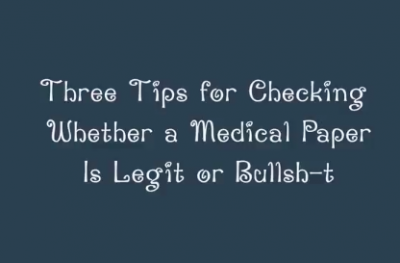Three Tips for Checking Whether a Medical Study Is Legit or BS
Tools to help you learn to quickly sort out whether a paper is solid or shaky.

All Global Research articles can be read in 51 languages by activating the “Translate Website” drop down menu on the top banner of our home page (Desktop version).
Visit and follow us on Instagram at @crg_globalresearch.
***
You’ve just watched a video of a high-profile, Covid-sceptic speaker saying that shedding of the spike protein from vaccinated people endangers those they come in close contact with. You want to find out more, so you look at one or two of the links under the video that provide source material for what the speaker said. (Great those links are there; most videos don’t have them.)
Or a friend who is a believer in the official narrative about Covid has sent you a news item with a scary headline about the Indian ‘triple-mutation new variant.’ You’re pretty sure the article is very misleading, so you want to check out the study it’s based on.
How can you find source material and — if and when you find it – try to quickly figure out whether it’s legit?
Because there’s a huge, hot complicated mess of claims and counter-claims out there. And unfortunately there’s misleading information coming from ‘experts’ on both sides of the Covid divide.
And this isn’t unique to Covid. As Scott Adams — who created the Dilbert cartoon strip and now is a pundit — points out in page 14 of his book Loserthink:
“One thing I can say with complete certainty is that it is a bad idea to trust the majority of experts in any domain in which both complexity and large amounts of money are involved.”
So I’ve put together three tips to help you quickly discern whether a medical paper is meaningful or meaningless. I’ve distilled the tips from my decades of reading, writing and editing scientific and medical papers.
Tip One: Is key information left out or hidden?
Tip Two: If the source material is a study about the effect of an intervention, does the study measure serious illness or death in humans, or is it on animals or theoretical, test-tube models?
Tip Three: Does the study contain the information that the article or video referring to it says it contains?
To Read Complete Article by Rosemary Frei click here
**
Note to readers: Please click the share buttons above or below. Follow us on Instagram, @crg_globalresearch. Forward this article to your email lists. Crosspost on your blog site, internet forums. etc.
This article was originally published on the author’s blog site, Rosemary Frei.

